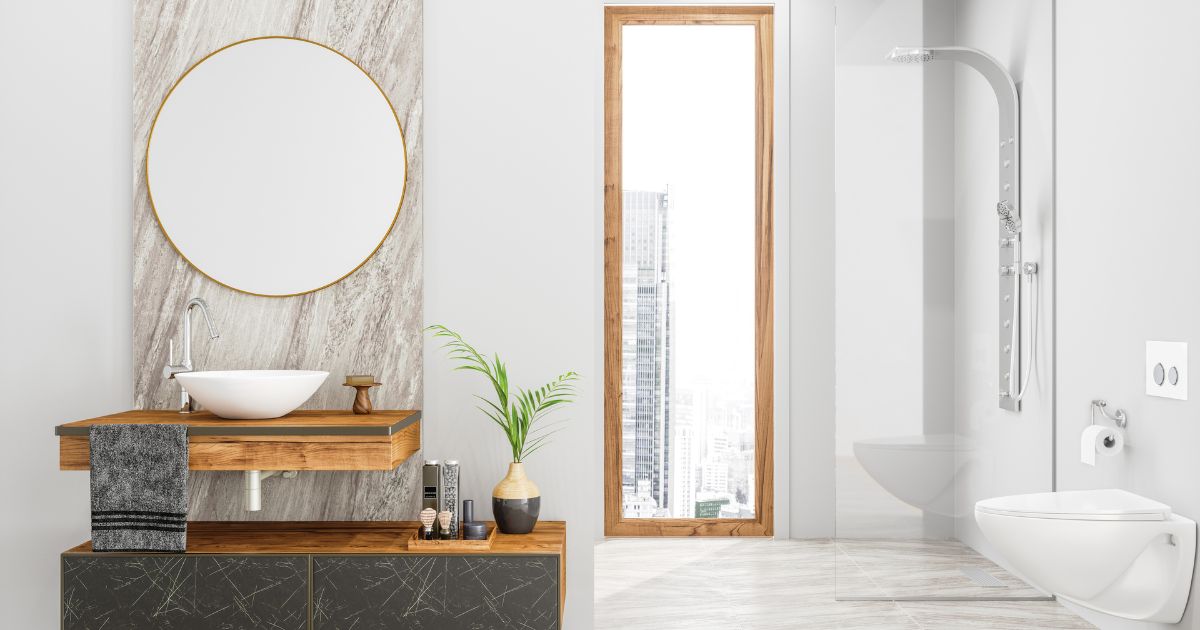One of the most crucial decisions you’ll make when remodeling your bathroom is choosing tiles that matches the overall appearance of your bathroom. Tiles aren’t just practical: they’re a style statement that can completely transform the look and feel of your space. Whether you’re aiming for a modern, sleek look or a more traditional vibe, choosing the perfect tiles can make all the difference. Let’s delve into some key tips to help you pick the ideal tiles for your bathroom and kitchen.
Functionality Comes First
Before you get drawn to any particular design, think about how the area will be used. Bathrooms and kitchens are busy places prone to moisture and spills. You need tiles that not only look good but can also withstand the daily hustle and bustle. Porcelain and ceramic tiles are popular choices because they’re versatile, durable, and easy to clean. They can handle the demands of daily life while still looking great.
Style That Suits You
Your tiles should reflect your personal style and complement the overall design of your home. If you’re after elegance, natural stone tiles like marble can add a luxurious touch. However, keep in mind that they might require more maintenance than other types. For a more rustic or earthy feel, consider terracotta or slate tiles.
Size, Layout, and Color of Tiles
The size and layout of your tiles can affect how spacious your bathroom or kitchen appears. Larger tiles can make a small room seem bigger, while smaller, decorative tiles can add interest to a large, plain space. The color of the tiles also plays a crucial role. Lighter colors can make a room feel brighter, while darker hues create a cozy atmosphere.
Durability Is Essential
In high-traffic areas like bathrooms and kitchens, durability is key. Porcelain tiles are known for their hardness and resistance to wear and tear, making them ideal for busy areas. For less-used areas, you might consider options like ceramic or glass tiles.
Maintenance Made Easy
Some tiles require more maintenance than others. Natural stone tiles, for example, often need to be sealed and resealed periodically. If you’d rather not deal with the upkeep, opt for tiles that are easy to clean and require less maintenance, like glazed ceramic or porcelain.
Budgeting and Samples
Set a realistic budget for your tile project, including not just the cost of the tiles but also installation and any additional materials. Don’t forget to explore home remodeling loan options if needed. Getting samples to see how the tiles look in your space can be incredibly helpful and can prevent potential disappointment after installation.
Installation: DIY or Professional?
Decide whether you want to install the tiles yourself or hire a professional. While DIY can save money, professional installation ensures the job is done right, especially for more expensive tile options.
Conclusion: Mastering the Art of Choosing Tiles
Choosing the right tiles for your bathroom or kitchen is a blend of practical considerations and personal style. It’s about finding the perfect balance between functionality, durability, aesthetics, and budget. With these tips in mind, you’re well on your way to selecting materials that will enhance the beauty and value of your home.
Follow us on Instagram at @kitchenandbathshop for more home improvement tips, tricks, and creative ideas! Our page is filled with inspiration, showcasing the latest trends, innovative designs, and practical advice for your kitchen and bathroom projects. Whether you’re looking for a quick DIY fix or planning a complete renovation, you’ll find a wealth of information and inspiration. We’re here to inspire, guide, and help you create the home of your dreams!
Frequently Asked Questions
Q1. Are natural stone tiles suitable for high-traffic areas like kitchens?
While natural stone tiles like marble add a luxurious touch, they may not be the best choice for high-traffic areas due to their susceptibility to scratches and stains.
Q2. Can I use glass tiles in my bathroom shower?
Yes, glass tiles can be used in bathroom showers. However, ensure they are properly sealed to prevent water damage and consider using textured or frosted glass for added safety.
Q3. How do I know if a tile is suitable for my kitchen floor?
Look for tiles with a high PEI rating, which indicates their durability and resistance to wear. Porcelain tiles are often recommended for kitchen floors due to their strength and low maintenance.
Q4. Can I install tiles over existing flooring?
It’s possible to install tiles over existing flooring, but it’s essential to ensure the surface is clean, level, and structurally sound. Consult with a professional to determine the feasibility of this option.
Q5. What type of grout should I use for my tiles?
For most tile installations, sanded grout is recommended for joints wider than 1/8 inch, while unsanded grout is suitable for narrower joints. However, always follow the manufacturer’s recommendations for the specific type of tile you’re using.



